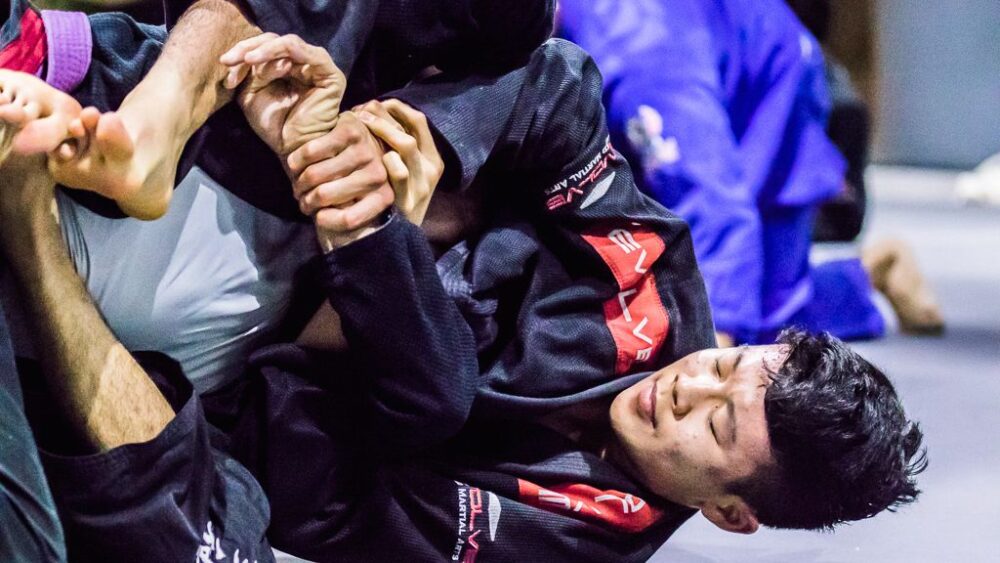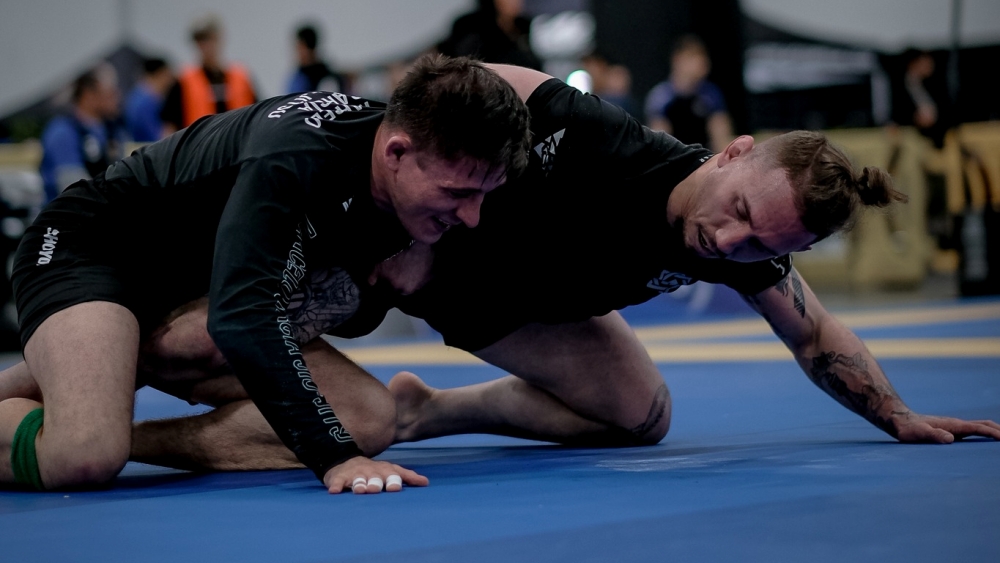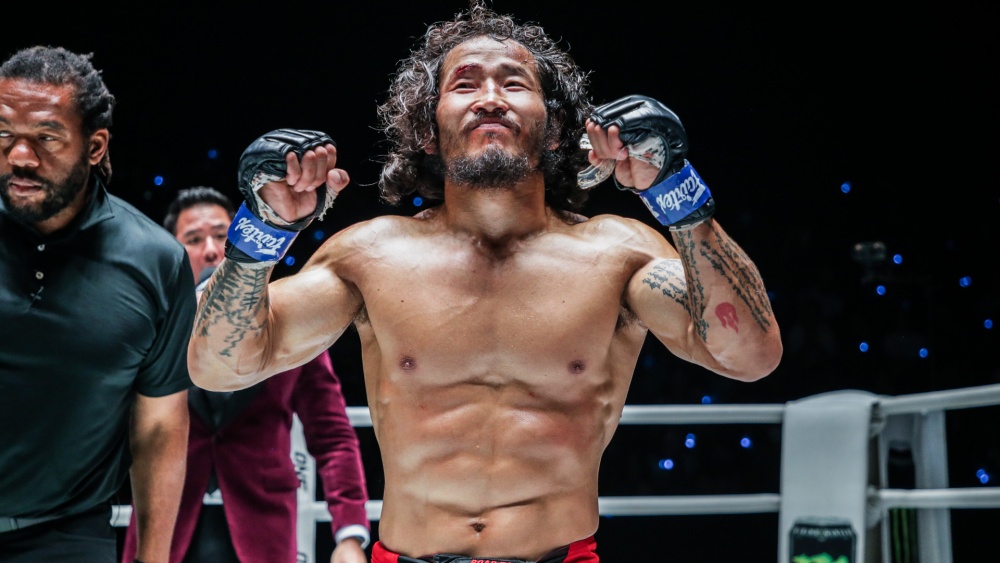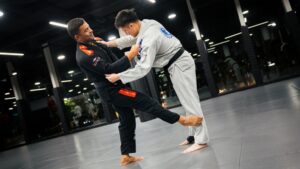There are many ways to improve in Brazilian Jiu-Jitsu. Every grappler has strengths and weaknesses, and everyone’s game is different. While there is no standard way to improve, the usual path to development is first learning to play the guard and escape bad positions. This allows grapplers to build their confidence, knowing that they can work their way out from getting pinned if they ever fail with their offense.
Next is building your attacks. This means that a grappler should develop their favorite guard pass and submissions. Once a grappler has established their favorite positions, setting traps comes next. Chaining attacks and setting traps are skills typically seen from experienced blue belts and above. This means that it is a requisite skill that all improving grapplers should possess. This article will discuss a technique guaranteed to elevate your offense – the kimura trap.
The kimura, also known as the double wristlock, chicken wing, and gyaku ude-garami in Judo, is a versatile submission that can be applied from the stand-up or on the ground. It is a figure-four joint lock that isolates the elbow and shoulder joint using a wrist-to-wrist grip (figure four), which allows the attacker to place immense pressure on the shoulder joint.
It is famously known in the grappling world as the technique that Masahiko Kimura used to defeat Helio Gracie in their legendary match on October 23, 1951. The match was and is still among the most influential bouts in grappling. Since then, the technique has been named the kimura to honor the Japanese martial arts legend.
What Is The Kimura Trap?
The kimura trap is where you limit the opponent’s responses by keeping them in a particular position. Maintaining the figure-four grip forces the opponent to respond predictably, making it easier for the attacker to apply submissions or move to a more dominant position.
The kimura trap is one of the most powerful traps in Brazilian Jiu-Jitsu. It is a technique that’s modified from a submission to a highly versatile controlling position. It can be used to apply and transition to different submissions; you can also use it to move to other dominant positions, such as the back. It gives the attacker great control over the opponent, allowing you to apply takedowns, reversals, sweeps, and guard passes in seemingly all positions, from standing, ground, bottom, top, or when defending and attacking.
You can take a kimura grip whenever the opponent opens their elbow. This means that their elbow is not glued to their body. Grabbing with your thumb is the best initial approach to controlling the opponent’s wrist. As you grab your wrist, use a monkey grip (grip without your thumb). The monkey grip is stable when the kimura is locked in; besides, it provides more power.
If the opponent doesn’t defend from the kimura grip, you can finish them with the kimura submission itself. Most of the time, the opponent will try to stop you by preventing their arm from going behind their back. This is where the kimura trap comes in. You must put their wrist above their elbow and their posture broken by keeping their shoulder down, preventing the opponent from countering the kimura grip, ensuring you have optimal control. Typically, the opponent needs to drop their elbow between your arms to escape, but as long as you’re controlling their arm, it is unlikely to happen.
Entry From The Bottom Position
You can get the kimura from the bottom half guard by pulling the opponent onto you as you screw your hips underneath them. This loads their weight to your hips, making it easier for you to get a potential sweep if needed with little effort. Bump the opponent forward with your inside leg and push off the mat with the other. If the opponent turns away, you can slide your knee between their knee and elbow to take their back.
Think of pressing their wrist into their stomach so you can effectively push them over. You can use your butterfly hook with your outside leg to lift and sweep the opponent up if they are heavier or bigger as you shoot your hips below them.
If the opponent is sitting far back, making it difficult for you to get the sweep, you can release your guard and spin through their back. Pushing the opponent’s wrist to their belly to drop them and preventing their shoulder from posturing up will prevent them from going for the armbar, a typical counter to the kimura trap.
Entry From The Top
A common entry to the kimura is from top half guard. Assuming that the opponent has a shallow underhook, switch to reverse kesa gatame and lock the kimura grip. Roll over your shoulder right to the kimura trap. If the opponent traps your leg as you roll over, maintain the kimura grip and take your legs out, as the opponent cannot effectively defend from this position.
You can also counter the opponent’s single leg using the kimura trap by applying the kimura grip as they grab your leg. Hop your other leg close to their body to bring your hips closer and underneath the opponent. Use your trapped leg as a butterfly hook to lift them forward as you fall back.
Submissions From The Kimura Trap
There are many submissions you can attempt from the kimura trap if the opponent turns away or toward you. It is difficult to break a good kimura grip, making the kimura trap highly useful regardless of size. If the opponent turns away, you can capitalize by applying the following submissions below.
To apply a triangle, hook your leg over their opposite shoulder while maintaining the kimura grip. Drop your knee down to the opposite side to change your angle. Lock your legs and hide them behind the opponent to prevent them from escaping. By shrimping your glute out, you can use your calf to apply pressure on the opponent’s carotid artery to make the triangle tighter.
Another technique you can do from here is the trusty armbar. Maintain the kimura grip and use your other leg to hook on top of the opponent’s opposite shoulder to their inner elbow. This helps with your angle. After setting the angle, move your leg from trapping their shoulder up across their face to finish the armbar. Another armbar entry is to use your forearm to push their head as you swing your leg over their face.
When the opponent turns towards you, the kimura itself is an excellent submission option. Bring both your legs over their head and put your knees on the mat. A usual problem with the kimura is that breaking the opponent’s defensive grips can be challenging. Prioritize getting their hand behind their back and your elbow on the mat to make it difficult for the opponent to re-grip. Turn your hips toward their head and lift up their arm to get a better range of motion.
Conclusion
The kimura trap is an effective technique that will make you a very dynamic attacker. If you are having trouble against wrestlers or top-heavy opponents, incorporating the technique into your arsenal will surely work well in your favor. Keep in mind to practice slowly when drilling the technique if you are new to the kimura trap.
You may also like:

















